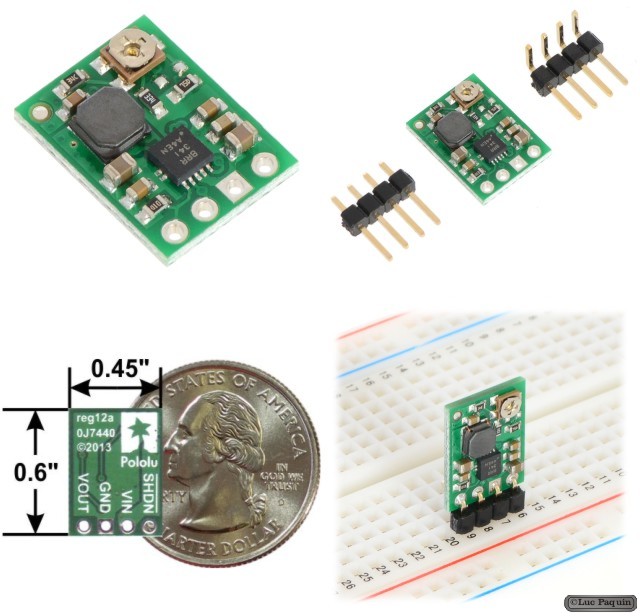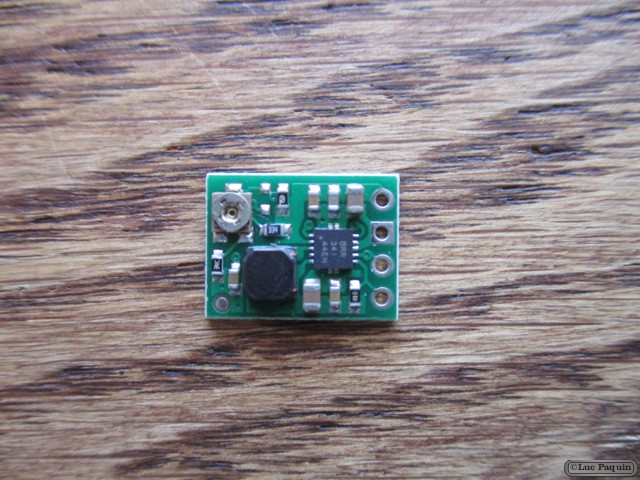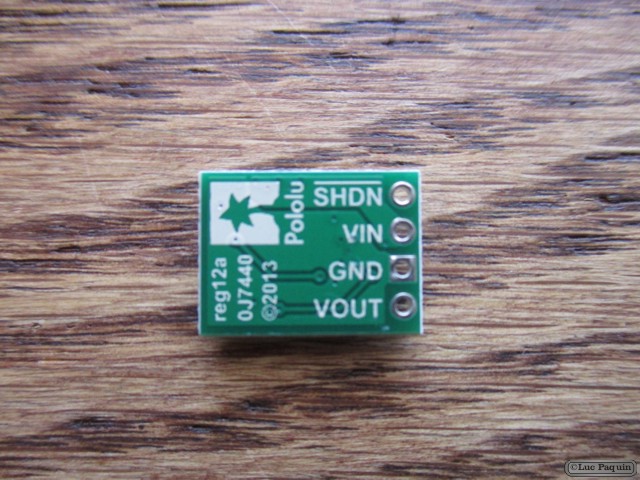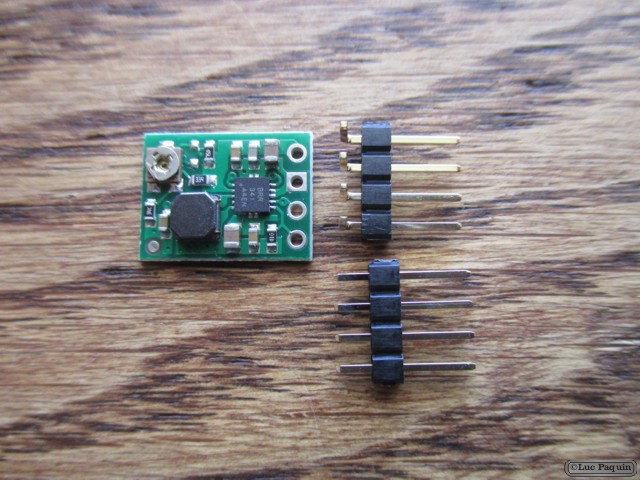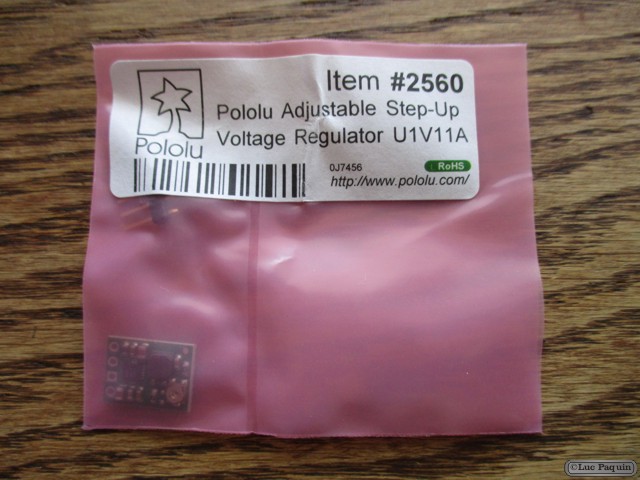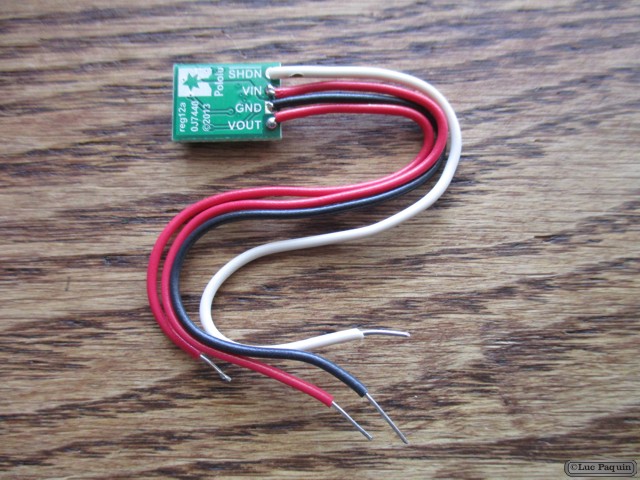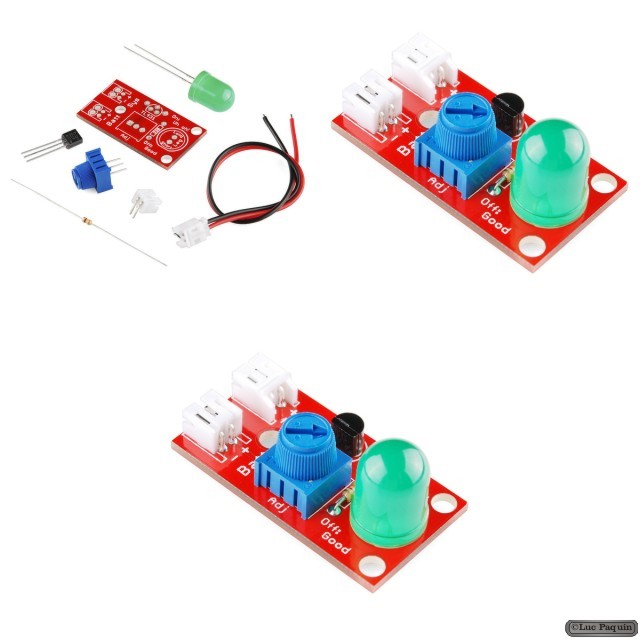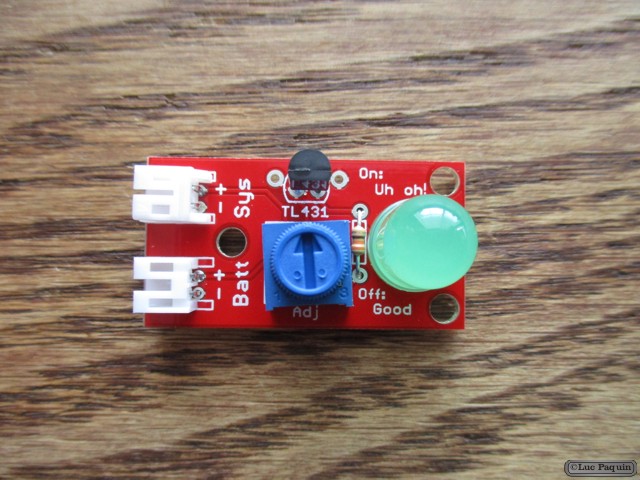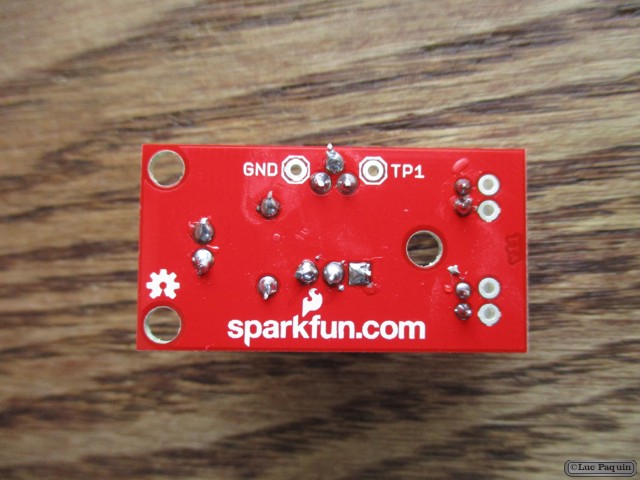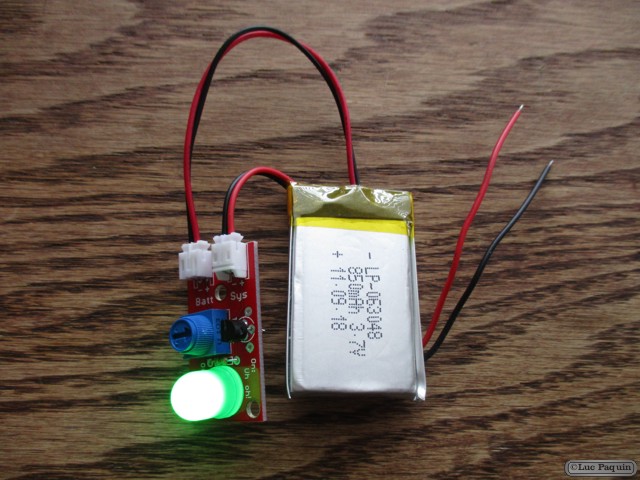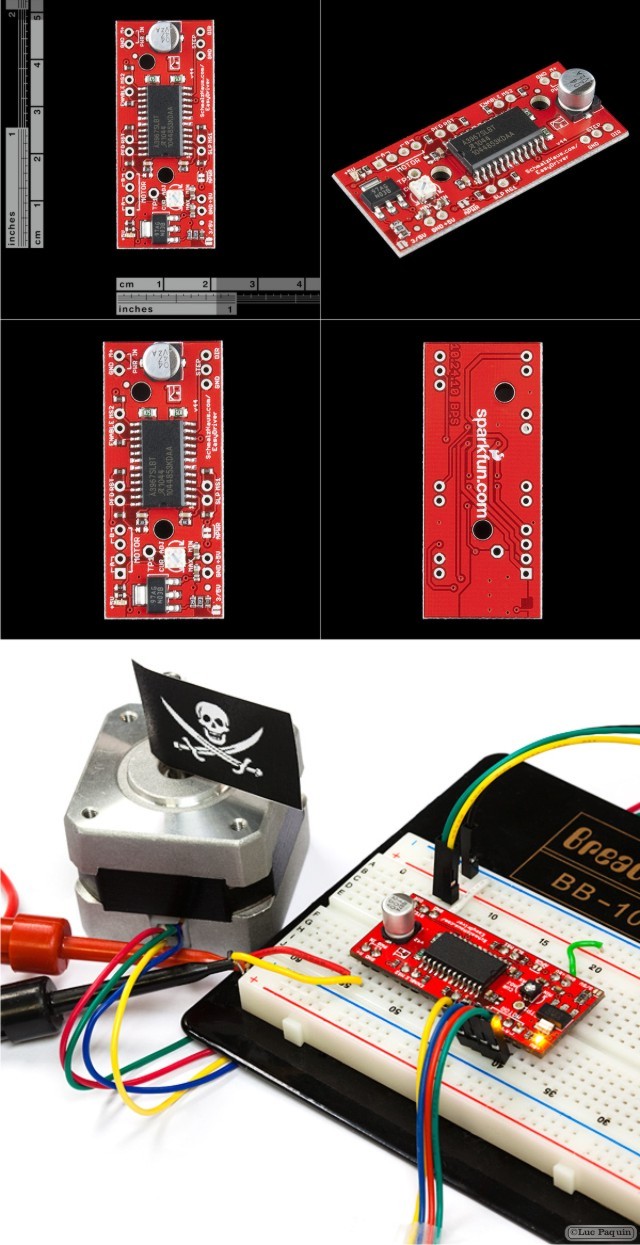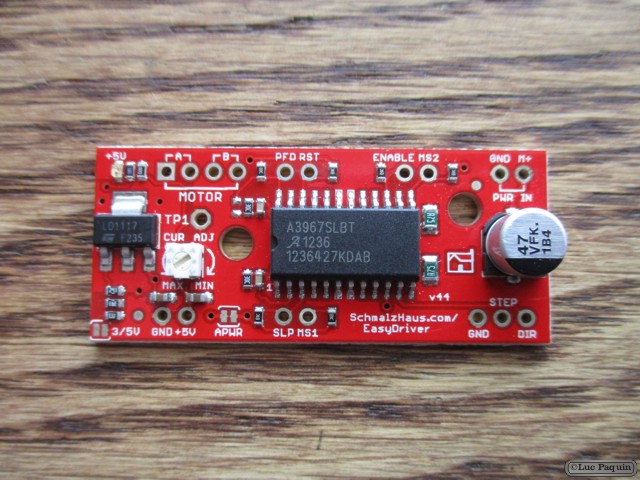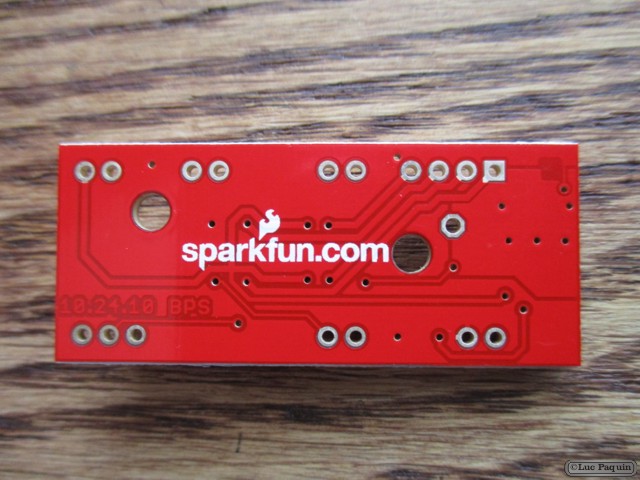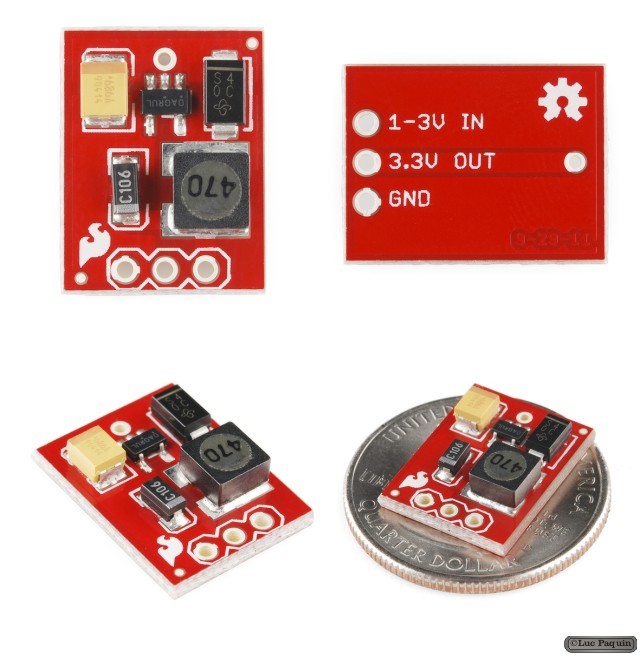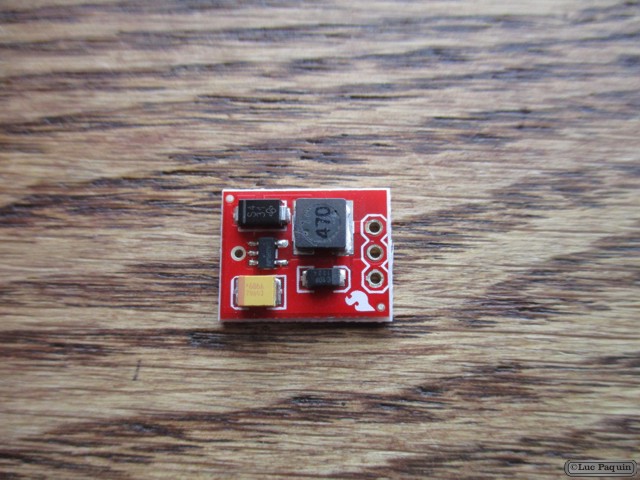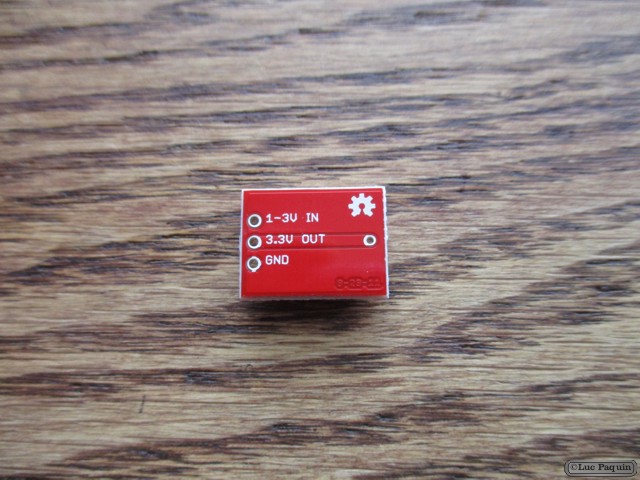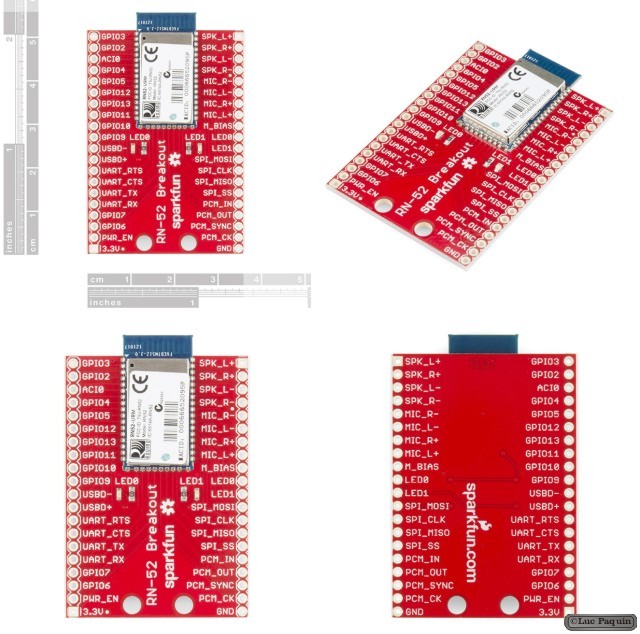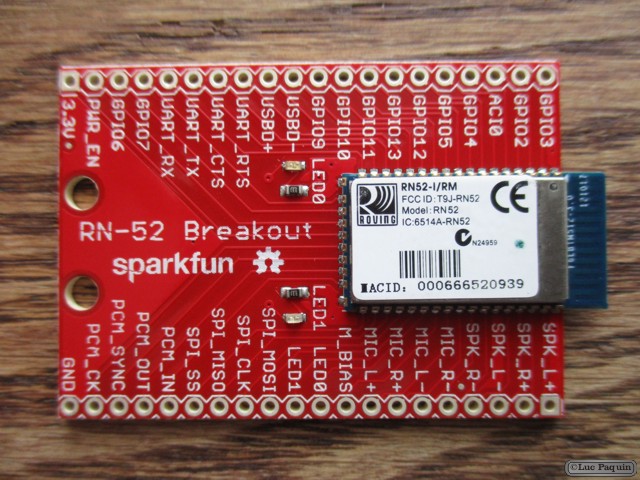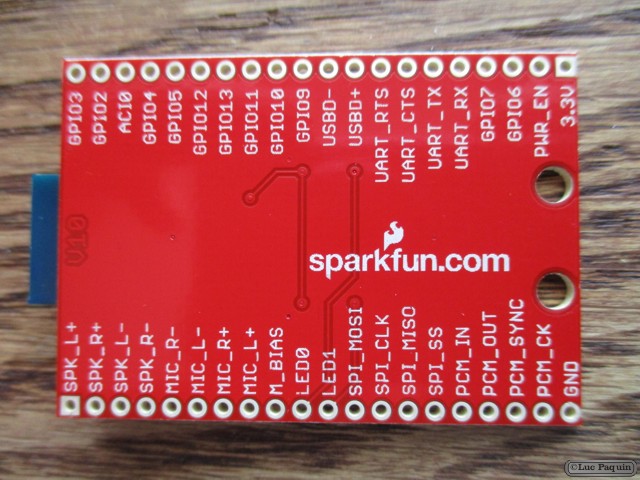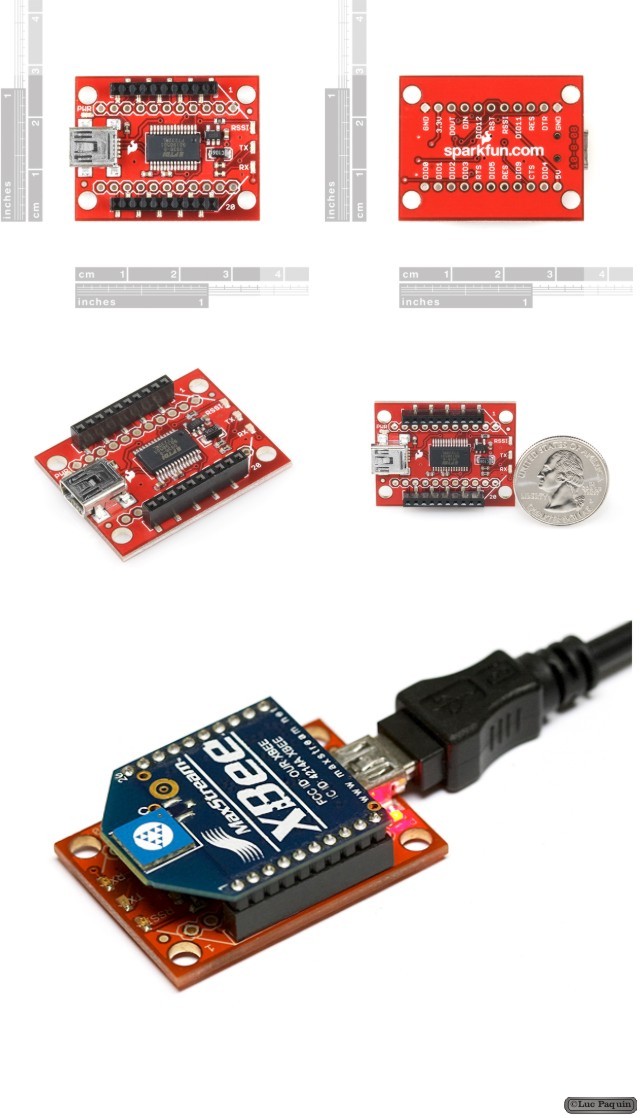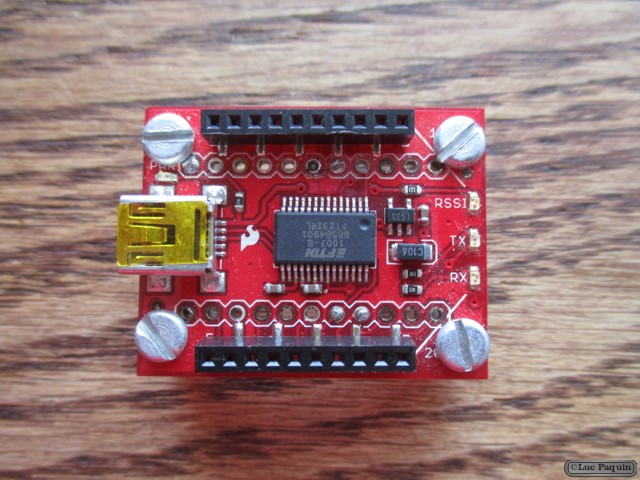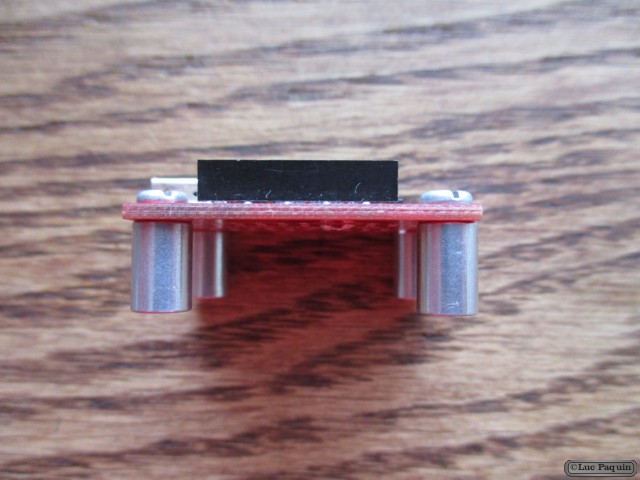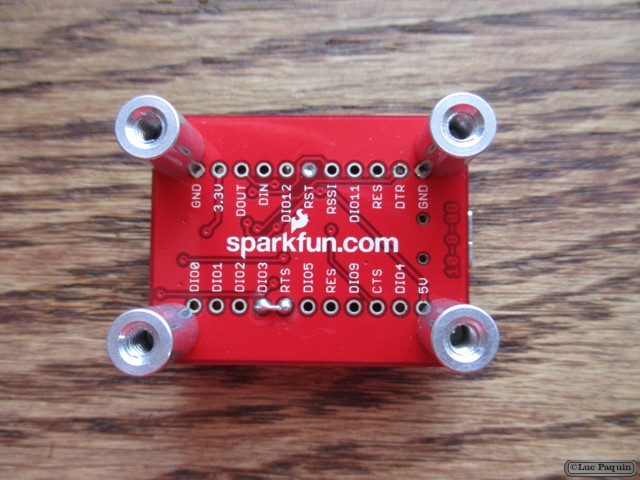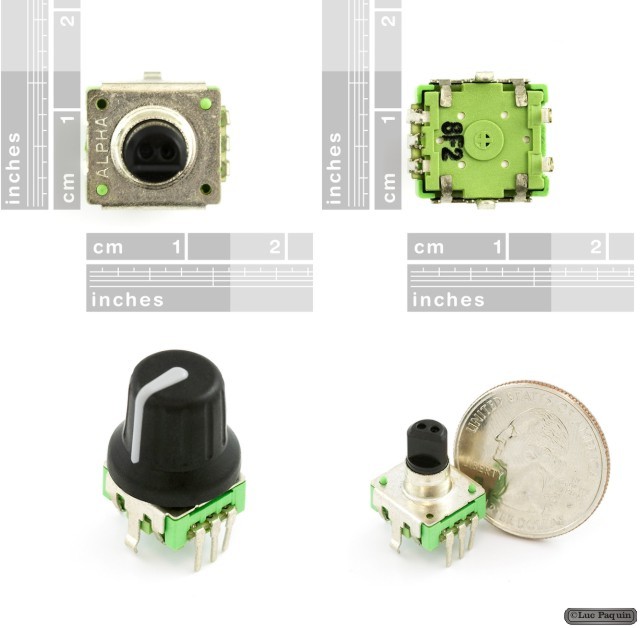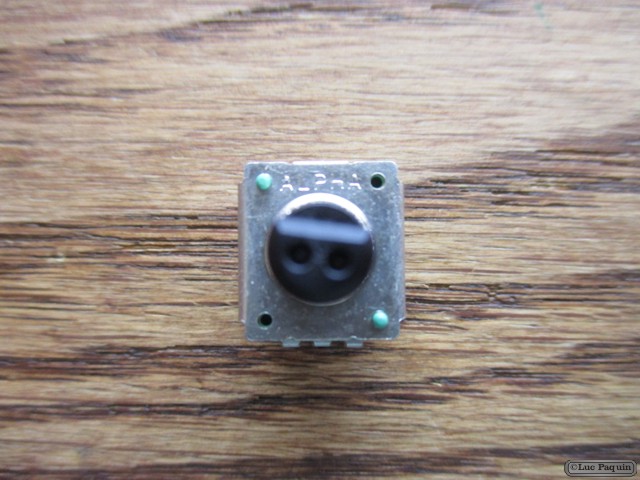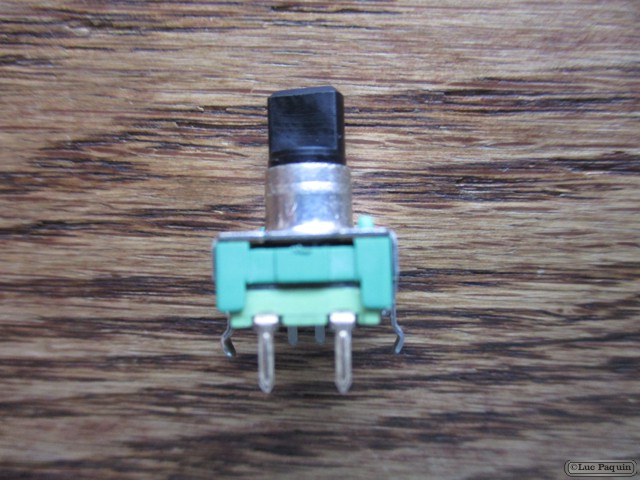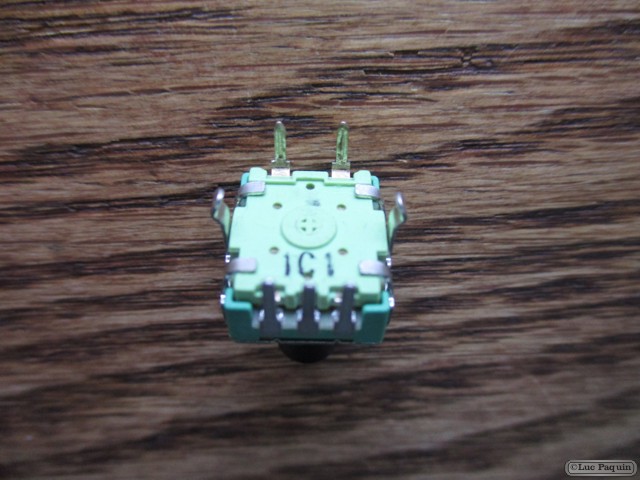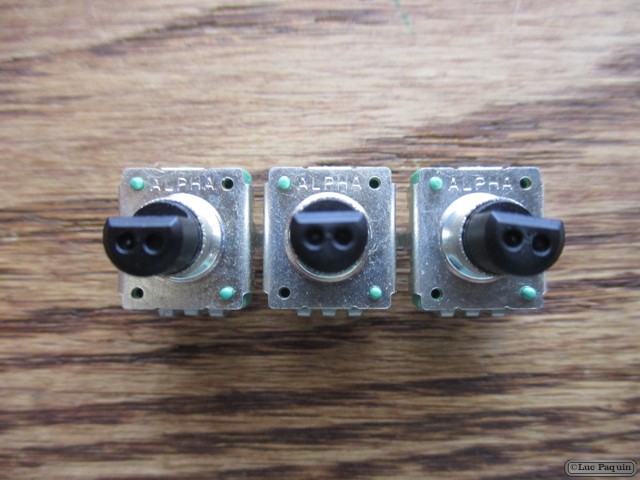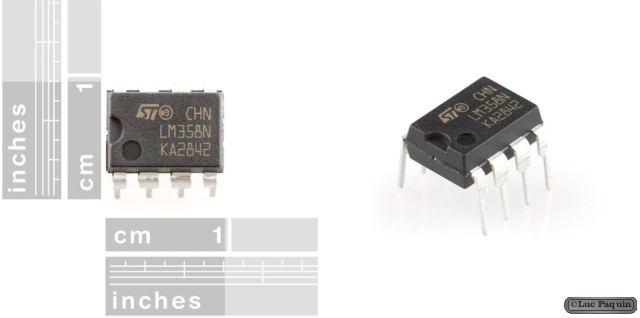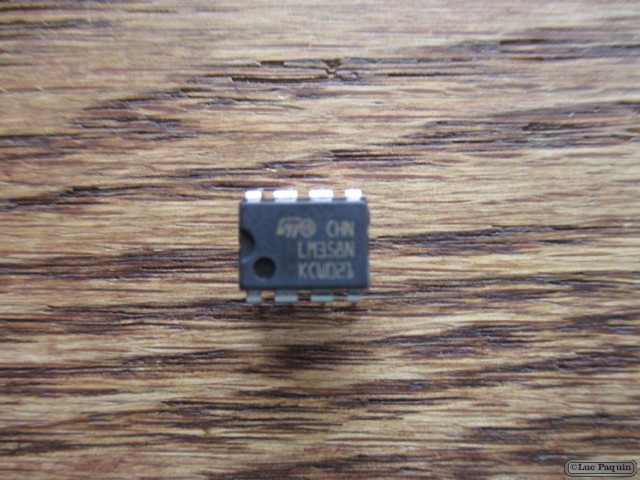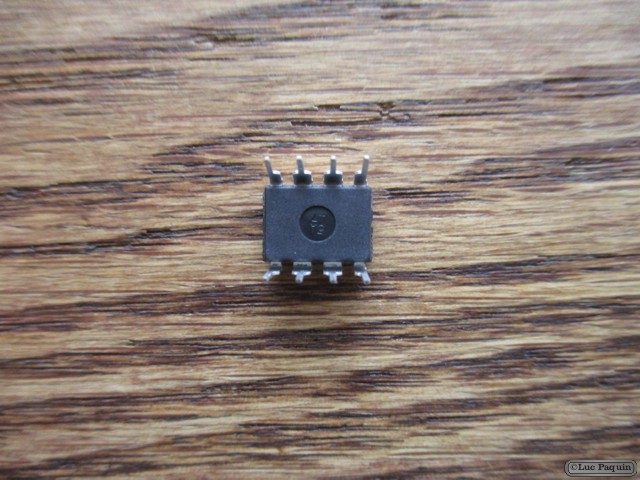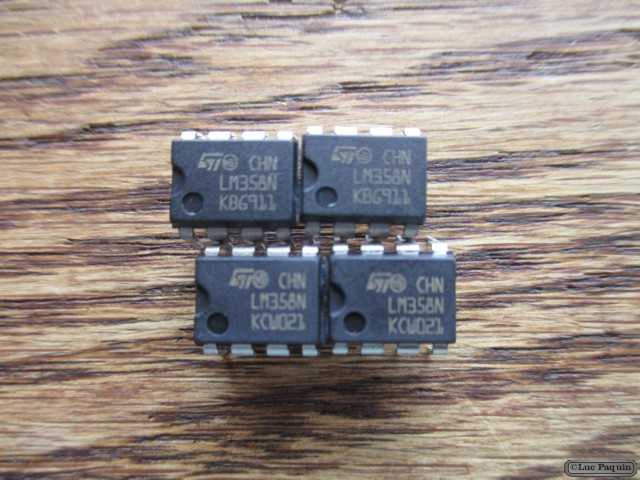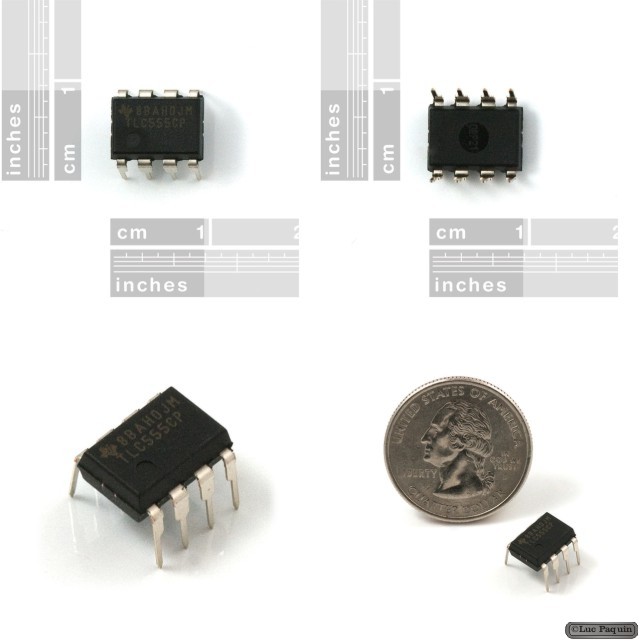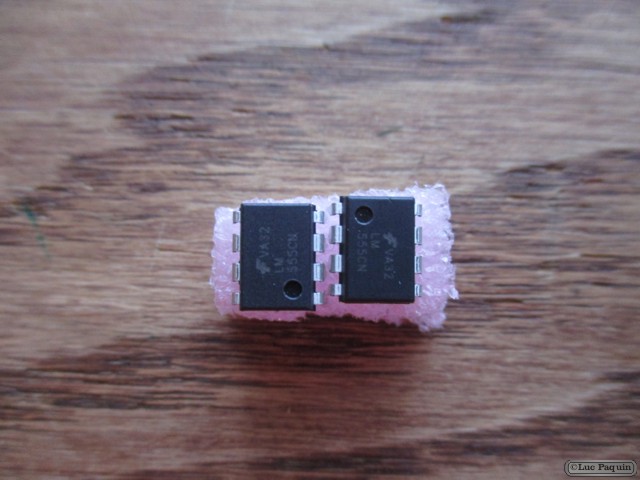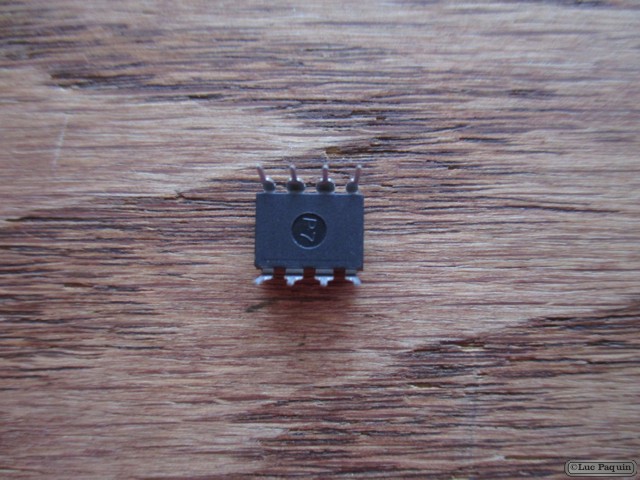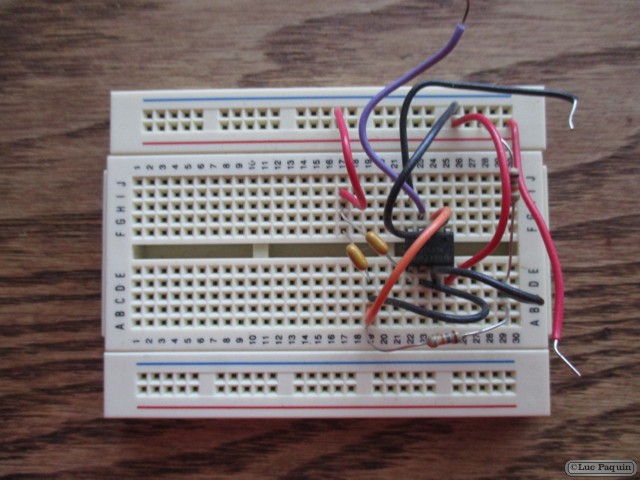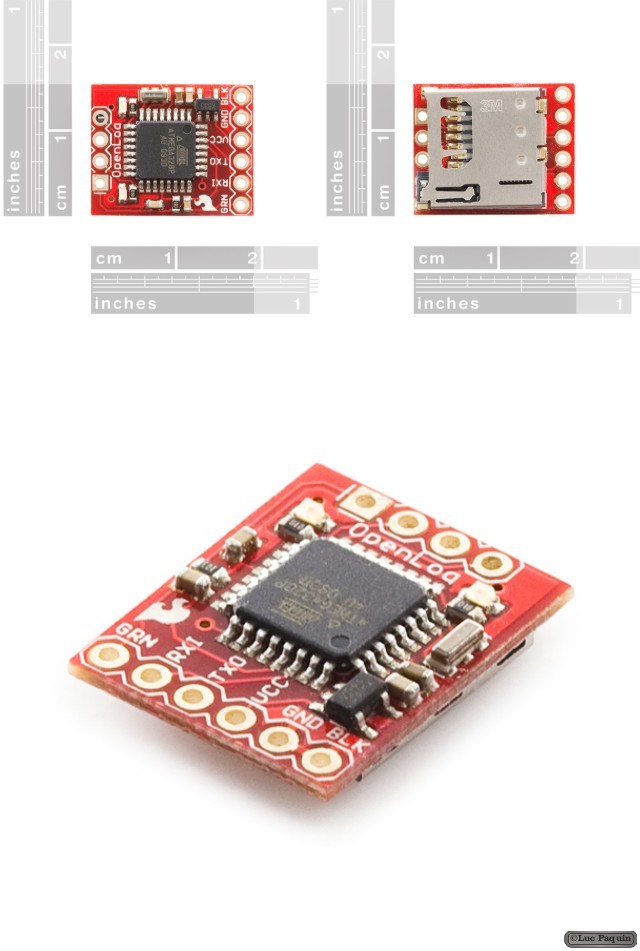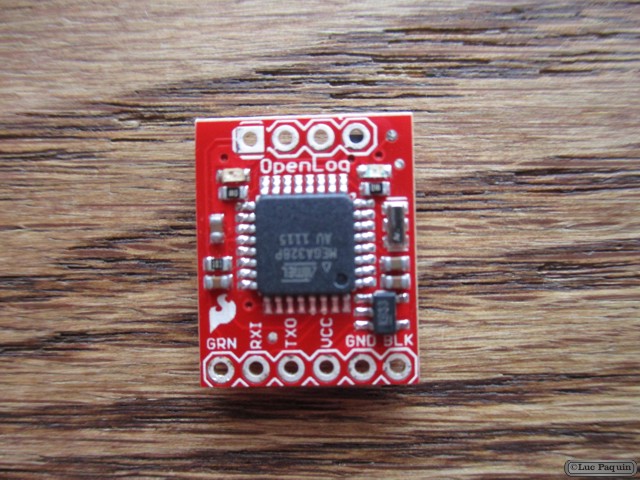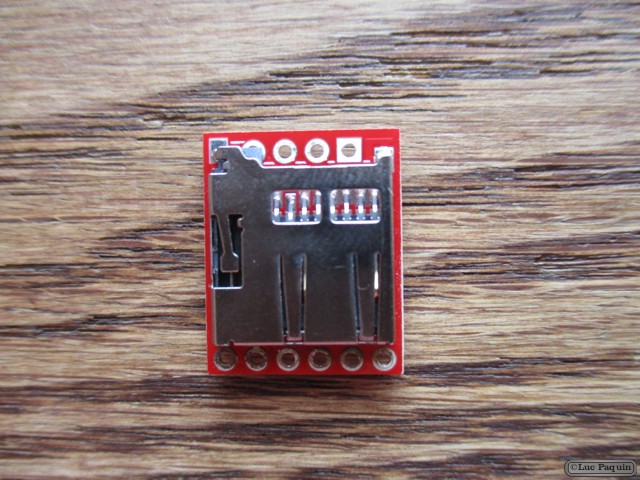Arduino
Arduino
Pololu – Adjustable Step-Up Voltage Regulator U1V11A
Pololu: #2560
This compact (0.45″×0.6″) U1V11A switching step-up (or boost) voltage regulator efficiently boosts input voltages as low as 0.5 V to an adjustable output voltage between 2 V and 5.25 V. Unlike most boost regulators, the U1V11A offers a true shutdown option that turns off power to the load, and it automatically switches to a linear down-regulation mode when the input voltage exceeds the output. The pins have a 0.1″ spacing, making this board compatible with standard solderless breadboards and perfboards.
Overview
This adjustable boost (step-up) voltage regulator generates higher output voltages (between 2 V and 5.25 V) from input voltages as low as 0.5 V, and it also automatically switches to a linear down-regulation mode when the input voltage exceeds the output. This makes it great for powering electronics projects from 1 to 3 NiMH, NiCd, or alkaline cells or from a single lithium-ion cell. Additionally, unlike most boost regulators, this unit offers a true shutdown option that turns off power to the load (with typical boost regulators, the input voltage will pass directly through to the output when they are disabled).
When boosting, this module acts as a switching regulator (also called switched-mode power supplies (SMPS) or DC-to-DC converters) and has a typical efficiency between 70% to 90%. The available output current is a function of the input voltage, output voltage, and efficiency (see Typical Efficiency and Output Current section below), but the input current can typically be as high as 1.2 A. This regulator is also available with a fixed 3.3 V or fixed 5 V output, and very similar regulators are available in a much smaller size with a fixed 3.3 V or fixed 5 V output.
The regulator’s thermal shutdown engages at around 140°C and helps prevent damage from overheating, but it does not have short-circuit or reverse-voltage protection.
Features
- Input voltage: 0.5 V to 5.5 V
- Adjustable output voltage from 2 V to 5.25 V
- True shutdown option that turns off power to the load
- Automatic linear down-regulation when the input voltage is greater than the output voltage
- 1.2 A switch allows for input currents up to 1.2 A
- Good efficiency at light load: <1 mA typical no-load quiescent current, though it can exceed 1 mA for very low input voltages (<100 µA typical quiescent current with SHDN = LOW)
- Integrated over-temperature shutoff
- Small size: 0.45″ × 0.6″; × 0.1″ (11.5 × 15.3 × 2.5 mm)
Don Luc
SparkFun – “Uh-oh” Battery Level Indicator Kit
SparkFun: KIT-11087
Description: Under-powering a digital device can sometimes have pretty nasty consequences. Brown-out conditions can cause memory to get written or overwritten in odd ways, can cause unexpected behavior in connected systems and just generally screw up your day. One way to avoid this is to keep an eye on your battery voltage and turn off the system before it gets too low (or plug it in). We’ve whipped up a little board to help you out with this situation: the “Uh-oh” battery level indicator.
At the heart of the “Uh-oh” board is the TL431ACLPG shunt regulator diode. The reference voltage can be adjusted by using the trimpot on board. When the battery connected to the board reaches that voltage, the shunt allows current to flow through the LED, alerting you to a low battery situation. In order to set the appropriate reference voltage, you can use the formula found in the schematic to calculate your desired resistance and set it using the trimpot and a multimeter measuring resistance across the provided test points.
This board comes as a “bag of parts” kit. All of the parts are through-hole and it shouldn’t take long to solder together. The footprint of each part is clearly marked on the PCB to help you throw it together.
Kit Includes:
- “Uh-oh” Through-hole PCB
- 10mm Diffused Green LED
- JST Wire Assembly
- TL431ACLPG IC
- JST Right-Angle Connector
- 10K Trimpot
- 330 Ohm Resistor
Don Luc
SparkFun – EasyDriver Stepper Motor Driver
SparkFun: ROB-10267
Description: The EasyDriver is a simple to use stepper motor driver, compatible with anything that can output a digital 0 to 5V pulse (or 0 to 3.3V pulse if you solder SJ2 closed on the EasyDriver). EasyDriver requires a 7V to 20V supply to power the motor and can power any voltage of stepper motor. The EasyDriver has an on board voltage regulator for the digital interface that can be set to 5V or 3.3V. Connect a 4-wire stepper motor and a microcontroller and you’ve got precision motor control! EasyDriver drives bi-polar motors, and motors wired as bi-polar. I.e. 4,6, or 8 wire stepper motors. On this version (v4.4) we fixed the silk error on the min/max adjustment.
This is the newest version of EasyDriver V4 co-designed with Brian Schmalz. It provides much more flexibility and control over your stepper motor, when compared to older versions. The microstep select (MS1 and MS2) pins of the A3967 are broken out allowing adjustments to the microstepping resolution. The sleep and enable pins are also broken out for further control.
Note: Do not connect or disconnect a motor while the driver is energized. This will cause permanent damage to the A3967 IC.
Note: This product is a collaboration with Brian Schmalz. A portion of each sales goes back to them for product support and continued development.
Features:
- A3967 microstepping driver
- MS1 and MS2 pins broken out to change microstepping resolution to full, half, quarter and eighth steps (defaults to eighth)
- Compatible with 4, 6, and 8 wire stepper motors of any voltage
- Adjustable current control from 150mA/phase to 750mA/phase
- Power supply range from 7V to 20V. The higher the voltage, the higher the torque at high speeds
Don Luc
SparkFun – 3.3V Step-Up Breakout – NCP1402
SparkFun: PRT-10967
Description: The NCP1402 is a 3.3V DC-DC converter. The breakout board will accept voltage inputs between 1 and 3 Volts (such as 1 or 2 AA batteries) and output a constant, low ripple 3.3V output capable of sourcing up to 200 mA. This board is great for supplying power to 3.3V sensors or providing 3.3V from a a single AA battery.
The breakout board includes the necessary peripheral components. The input, output and ground pins are broken out on a 0.1″ grid to allow easy access on a breadboard.
Don Luc
SparkFun – Audio Bluetooth Breakout – RN-52
SparkFun: WRL-11777
Description: The RN-52 Bluetooth from Roving Networks is an audio module that makes it simple for you to create a hands free audio system for your car or remote control your media center. With this breakout board we’ve made it easy for you to drop it into any project you could use it for. All pertinent headers are broken out and labeled for your convenience.
The RN-52 module combines a class 2 Bluetooth radio with an embedded digital signal processor (DSP). The module is programmed and controlled with a simple ASCII command language. It provides a UART interface, several user programmable I/O pins, stereo speaker outputs, microphone inputs, and a USB port.
Features:
- Fully qualified Bluetooth module
- FCC Certified
- Fully configurable UART
- Dual-channel, differential audio input and output
- Supports iAP profile
- Low power sleep mode
- Maximum over air data rate of 3.0Mbps
- Compatible with all Bluetooth products that support SPP (almost all do)
- Embedded Bluetooth stack profiles: A2DP, AVRCP, HFP/HSP, and SPP
- 3.0 ~ 3.6V operation
- Bluetooth Technology v3.0 compatible
- Class 2 power output
Don Luc
SparkFun – XBee Explorer USB
SparkFun: WRL-08687
Description: This is a simple to use, USB to serial base unit for the XBee line. This unit works with all XBee modules including the Series 1 and Series 2.5, standard and Pro version. Plug the unit into the XBee Explorer, attach a mini USB cable, and you will have direct access to the serial and programming pins on the XBee unit.
You get the red board only. XBee modules and USB cable sold below.
Don Luc
SparkFun – Rotary Encoder
SparkFun: COM-09117
Description: This is a 12-step rotary encoder with a nice ‘clicking’ feel. It’s breadboard friendly, and has a pretty handy select switch (by pushing in on the knob). The encoder is different from a potentiometer in that an encoder has full rotation without limits. The unit outputs gray code so that you can tell how much and in which direction the encoder has been turned.
Don Luc
SparkFun – Op-Amp (Thru-Hole) – LM358
SparkFun: COM-09456
Description: The LM358 is a great, easy-to-use dual-channel opamp. Opamps have so many applications we figured we should probably carry at least one in a DIP package. LM358 applications include transducer amplifiers, DC gain blocks and all the conventional opamp circuits.
If you’re looking for a good, standard opamp the LM358 should fill most of your needs. It can handle a supply of 3-32VDC and source up to 20mA per channel. This opamp is great if you need to operate two individual opamps from a single power supply. Comes in an 8-pin DIP package.
Features:
- Two internally compensated op-amps
- Internally frequency compensated for unity gain
- Large DC voltage gain: 100 dB
- Wide bandwidth (unity gain): 1 MHz (temperature compensated)
- Wide power supply range:
- Single supply: 3V to 32V
- or dual supplies: +/-1.5V to +/-16V
Don Luc
SparkFun – 555 Timer
SparkFun: COM-09273
Description: This is a common 555 timer/oscillator from TI. A classic for all of those first year circuits projects where you need to blink an LED, generate tone, and thousands of other great beginning projects. Google around for a huge list of resources and example projects.
Features:
- 4.5V to 16V supply
- 8-pin DIP package
- Timing from microseconds to hours
- Astable or monostable operation
- Adjustable duty cycle
- TTL compatible output
- Sink or source up to 200mA
Don Luc
SparkFun – OpenLog
SparkFun: DEV-09530
Description: The SparkFun OpenLog is an open source data logger. Simple to use, simple to change. We wanted to create a serial logger that just worked. Power up this device and it will start logging any received serial data at 9600bps. Sending Ctrl+z three times will drop out of logging and in to command mode. ‘new’ will create a new file. ‘md’ makes a directory. ‘?’ brings up the list of commands. OpenLog doesn’t do a lot, but it does log serial streams extremely well.
Example:
>new testfile.txt >append testfile.txt <(send large amounts of text followed by three ctrl+z characters)
That’s really it! OpenLog firmware is open source and is based on Bill Greiman’s sdfatlib. OpenLog currently supports FAT16 and FAT32 microSD cards (we’ve tested up to 64GB!).
All the design files (schematic, PCB layout, firmware) are open source released under the CC-SA v3 license and are available through GitHub.
Note: New firmware is available which allows the OpenLog to be used in Arduino 1.0 and also allows for higher baud rates. Check the links below for more information.
Features:
- Log to low-cost microSD FAT16/32 cards up to 16GB
- Simple command interface
- Edit config.txt file from a computer to change baud rate and other system settings
- Three modes:
- NewLog creates a new log every power up and immediately starts logging
- SeqLog appends a file called “SeqLog.txt” at every power up and immediately starts logging
- Command mode starts OpenLog at a command prompt at power up
- Configurable baud rates (2400 to 115200bps)
- Configure unit through config file or the menu system
- Power, ground, and RX-I are the minimum connections
- Reprogrammable ATmega328 using the Arduino IDE
- Two LEDs indicate writing status
- Input voltage from 3.3V to 12V
- 2mA idle, 6mA at maximum recording rate
Dimensions: 0.16 x 0.6 x 0.75″ (4 x 15 x 19mm)
Don Luc
